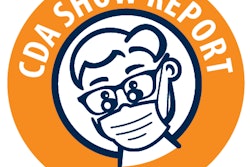
DrBicuspid.com is pleased to present the next column from two lawyers who spend every day defending dentists in litigation and before the licensing board. The purpose of this column is to offer our readers a fresh perspective on common practice and risk management issues from attorneys who litigate these issues in the real world.
A healthy 25-year-old woman presented to her general dentist to have a lower left molar filling performed. The decay was well into the dentin, so local anesthesia was planned to be given, as had been done for two previous fillings. The patient had ridden her bicycle to the office, as she generally did, and walked into the office in typical bicycle racing clothing.
Once she was seated in the chair, the dentist gave the patient a left-side mandibular block injection (1 carpule of 2% xylocaine, 1:100,000 epinephrine), which seemed to have gone uneventfully, other than the typical cringe by the patient as the solution was injected. The area became numb, and the dentist performed the filling without issue; the patient was discharged home on her own.

On her bicycle ride home, the patient felt a sudden onset of weakness to the point that she nearly fell off her bicycle. The feeling passed, and she made her way home. Within an hour or two, the patient developed a severe headache, so she called the dentist, who was gone for the day, so she left a voicemail regarding the headache and asked for a callback, which she did not receive.
The headache became unbearable, so a friend took her to the emergency room, where she underwent a cerebrovascular workup that revealed a brain bleed secondary to a ruptured vessel on the contralateral (right) side of the brain. An emergency evacuation of the hematoma by way of craniotomy was done. The hospital neurologist concluded that the stroke was one that resulted from an increase in blood pressure; the ruptured area had a pre-existing weakened wall that gave way from the internal pressure increase.
The patient survived, but she had a mild-to-moderate deficit in executive functions, so her ability to work as she had been doing was negatively affected, and she would never reach the income potential she had expected. Additionally, she had some minor physical impairments that were not grossly apparent but which, nevertheless, made her feel self-conscious.
Legal stance
The patient filed suit, claiming that the dentist was negligent in his giving of the mandibular block injection, so as to cause the elevation in vascular pressure, which caused the stroke.
During the deposition of the defendant dentist, the plaintiff's attorney focused almost exclusively on the technique employed by the dentist in giving the block. The dentist testified that, although he did not specifically recall how he gave this particular injection, he used the same technique every time, and then he proceeded to describe that technique, which was a standard approach. Moreover, he was fully aware of the anatomical landmarks.
Issues raised
- Patients with pre-existing conditions: The patient in this case had a pre-existing condition of what amounted to an aneurysmal bulge in one of her cerebral vessels. This was unknown to the patient, so it could not have been known to the dentist. However, there is a legal concept known as the "thin-skull or egg-shell plaintiff": This means that, even if the plaintiff has a condition that makes her more prone to injury, a person acting negligently toward that plaintiff is responsible for whatever damage is caused, despite the fact that the plaintiff was more susceptible to injury. Because there are no preventive steps to take to avoid this, it is provided just for background purposes.
- Informed consent: The plaintiff's attorney did not raise this as a litigation issue, but we raise it here, as we have done in the past, for your consideration as to providing risks of local anesthesia injections to patients.
- The direct cause of the stroke: Imaging studies performed left no question that the brain bleed came from the weakened vessel wall, and the treating hospital doctors believed that the rupture of the weakened wall was caused by a local increase in the pressure within that segment of vessel. However, those doctors could not definitively state what caused that elevation in pressure: the intravascular injection of the epinephrine in the xylocaine, the patient's anxiety from the procedure, the patient having engaged in significant exercise (bicycle riding) shortly after the injection and procedure, or some other issue.
- Follow-up: When patients call with complications, whether from actual treatment or from medication side effects, it generally means that something is going wrong that may not resolve on its own. Of course, there will always be patients who unnecessarily complain, so it is critical to patient care and also to potential liability to accept patient complaints as legitimate and stay in close touch with them until the problem resolves or the patient is referred. Keeping tight control over complications is part of what dental practice is all about, and it surely makes lawsuits less likely if things go wrong.
Additionally, this dentist's voicemail message simply said the office was closed. It provided no information to patients about what to do if there were an emergency and they could not reach the dentist.
Result
The hospital reports of the doctors were critical for our defense, because even those who treated the plaintiff were unable to pinpoint exactly what caused the stroke. Using this information, we made a motion before the court to dismiss the action, because a viable case of dental malpractice requires that negligence be the direct and proximate cause of any claimed injuries. The thrust of our argument was that, if no doctor who treated the plaintiff can determine the actual cause of the ruptured vessel, any expert opinion that pointed to a specific act would be speculation.
In opposing the motion, the plaintiff's attorney put forth a common sense argument to the judge, asserting that strokes do not happen in healthy 25-year-olds unless some improper intervention causes them. To bolster this, the attorney pointed to the regular exercise and "good shape" of the plaintiff, emphasizing that she had even exercised on her bicycle to and from the dentist. He added that the injection "must have been" given intravascularly, otherwise an elevation in local blood pressure so far from the site of injection would not have happened.
We countered both of these approaches in our reply papers. First, we showed the judge that every aspect of the injection, as testified to, was done in textbook fashion, and any opinion to the contrary was purely speculative. It is the plaintiff's burden to provide nonspeculative evidence of wrongdoing, which was not and could not be done here. Second, we reiterated, while recognizing the plaintiff's prior apparent good health, that she had a pre-existing but undiagnosed weakness that was prone to giving way, and no medical professional could conclude why it gave way when it did.
The court was clearly personally torn by this case: A young woman suffered a devastating life-changing injury, but there was no proof that her dentist had either done anything improper or that any action on his part directly caused that injury. Basic legal principles required dismissal of the case, and the court, therefore, granted our motion to dismiss. If the court had denied the motion and allowed the case to go to a jury, it is not hard to foresee that sympathy would have played a big role in the jury's verdict, despite the fact that the jurors would have been instructed by the judge to exclude sympathy.
Practice tips
“Dentists will best serve their patients by occasionally going back to review the basics of injection technique and the anatomic landmarks that serve as the safety zone borders.”
- Routine procedures: Certain procedures, local anesthesia injections among them, are performed by dentists every single day. It can become easy to simply do them without giving them much thought. Cases like this hopefully raise awareness that dentists will best serve their patients by occasionally going back to review the basics of injection technique and the anatomic landmarks that serve as the safety zone borders. In this case, had the dentist neglected to aspirate or failed to contact bony landmarks -- and testified accordingly -- the result could have been far different, as the plaintiff's attorney would have been able to show a negligently given injection and perhaps swayed the court to allow a jury to determine causation, given the clear negligence.
- Review of medical history: While this plaintiff did not present with any known medical problems, certain medical problems or conditions can make patients more likely to experience bad side effects. So, this case should raise awareness to the importance of medical conditions in dental patients, even when simple dentistry is being performed. Medical histories should be regularly and thoroughly reviewed. If an issue arises beyond the dentist's level of experience or knowledge, input should be sought from other health professionals.
- Office voicemails: A voicemail system, with nothing more, is not satisfactory as a means for patient contact in the event of an emergency. In this case, the dentist would likely have suggested going to the emergency room, so the result would not have been different, but there are many situations in which prompt response to patient concerns is critical.
William S. Spiegel, Esq., is a partner at the law firm Spiegel Leffler in New York City. He is a former assistant corporation counsel to the City of New York -- Medical Malpractice Division.
Marc R. Leffler, DDS, Esq., is also a partner at Spiegel Leffler. He received his dental degree from Columbia University, completed a residency in oral and maxillofacial surgery at New York University, and is a diplomate of the American Board of Oral and Maxillofacial Surgery.
Disclaimer: Nothing contained in this column is intended as legal advice. Our practice is focused in the state of New York, and there are variations in rules of practice, evidence, and procedure among the states. This column scratches the surface on many legal issues that could call for a chapter unto themselves.
The comments and observations expressed herein do not necessarily reflect the opinions of DrBicuspid.com, nor should they be construed as an endorsement or admonishment of any particular idea, vendor, or organization.



















